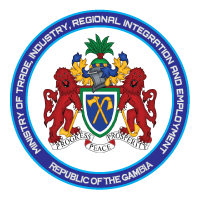Trade Strategy & Industrial Development Policy
The Gambia’s Trade Strategy and Industrial Policy has been prepared by the United Nations Conference on Trade and Development (UNCTAD) and is a follow-on from The Gambia’s Diagnostic Trade Integration Study, as updated in 2012, themed as “Harnessing Trade for Growth and Employment”, also prepared by UNCTAD.
The first draft of this report, which focused on the Trade Strategy, was prepared after a 2 week visit by the Lead Expert (Team Leader) to The Gambia from 30th May 2016 to 11th June 2016 as a first input into the Trade Strategy and an Industrial Policy. The second draft of the Trade Strategy was submitted in October 2016 and took account of the comments compiled by the Ministry of Trade, Industry, Regional Integration and Employment.
There was a long hiatus between the first phase of the preparation of the Trade Strategy and Industrial Policy and the second phase. The hiatus was as a result of the change of leadership in The Gambia that took place over a 2-3-month period in 2016-2017 and the immediate effects of this change of leadership on government activities. The delay was also because of the process that needed to be followed in recruiting the in-country Trade Strategy and Industrial Policy Experts and then to select a period which was suitable for the second mission. The second mission of the Lead Expert/Team Leader was from 26th November 2017 to 6th December 2017.The third visit by the Lead Expert took place between 11-16 February 2018 and during this time a validation workshop was held, on Thursday 15th February 2018, and the stakeholders validated the report.
The change of leadership has led to significant changes in policy direction for The Gambia.For example, during the second mission the government budget was being prepared and, although details were not available, it is clear that government is tightening up both fiscal and monetary policy and aiming to reduce the level of debt through a reduction of borrowing as well as rescheduling the debt. This is expected to have an effect on an industrial policy, and especially the financing of such a policy, in terms of the resources available as well as the structure of the financing. The Trade Strategy and Industrial Policy is built on existing sectoral policies and strategies and has, where possible, taken account of newer, mainly macroeconomic, policy and strategic direction.
Another change that has taken place over the last year is the urgency in which what could be termed the electricity crisis is being addressed. The Gambia has been suffering with very poor supply of electrical power, because of challenges in generation, distribution and administration, and resolving this crisis is a main, if not the main, priority of Government. If the electricity crisis could be resolved this would be a major boost to the productive sector.
Finally, The Gambia’s 2018-2021 National Development Plan was released in January 2018 and all proposed programmes that are part of the implementation of the Trade Strategy and Industrial Policy will need to be aligned with the National Development Plan.
Read the document below for The Gambia Trade Strategy and Industrial Development Policy 2018.
Our Partners

